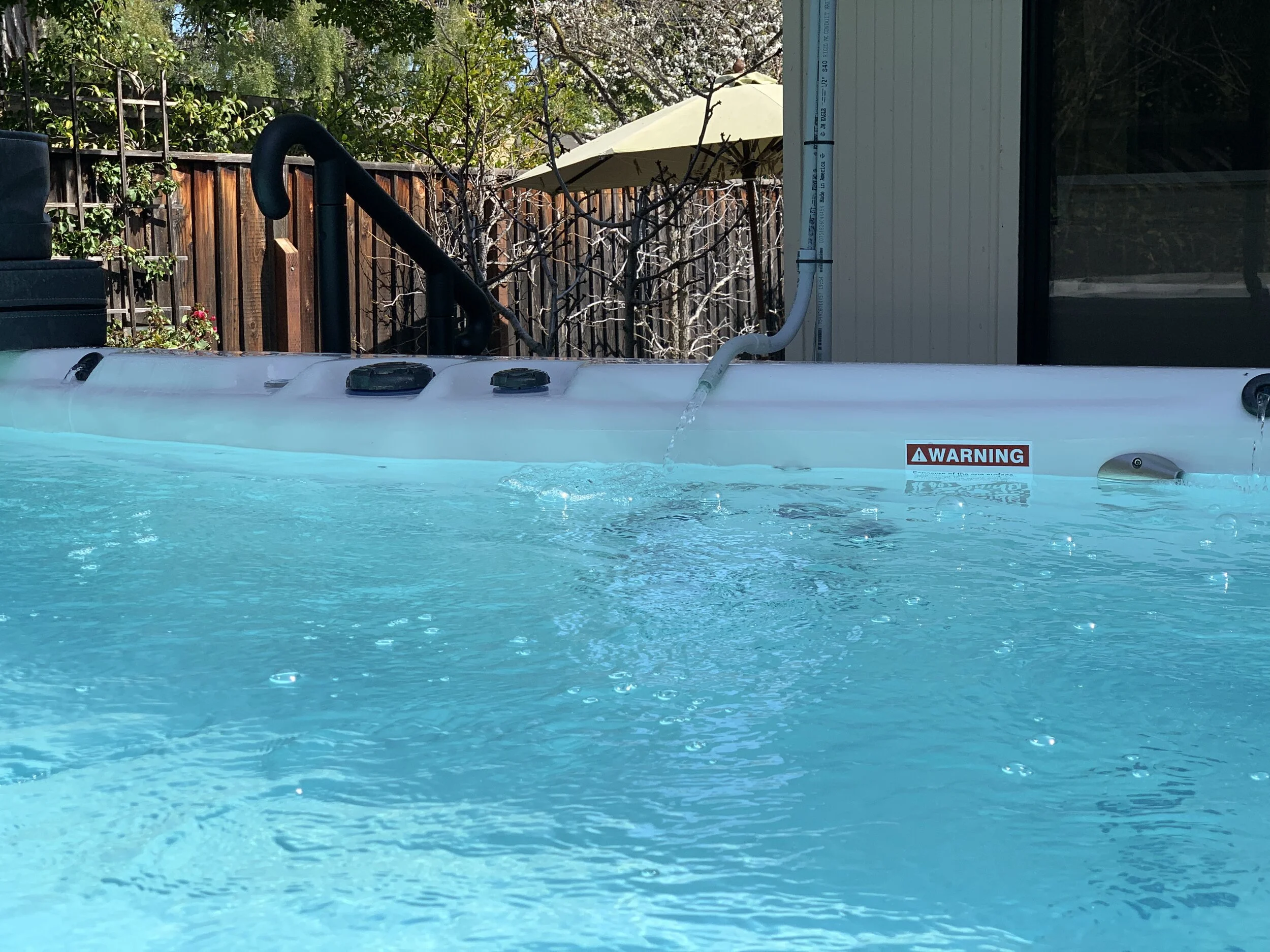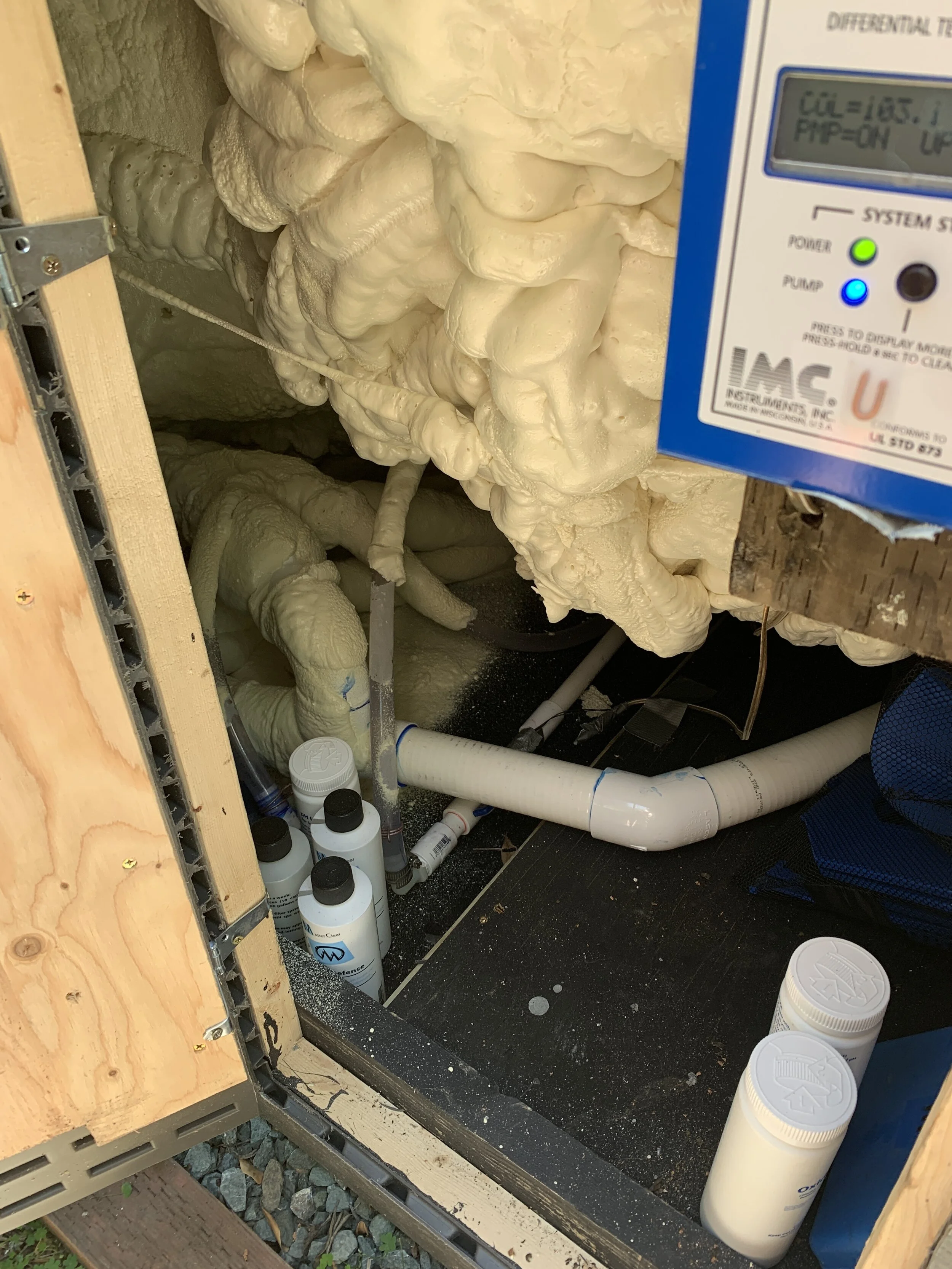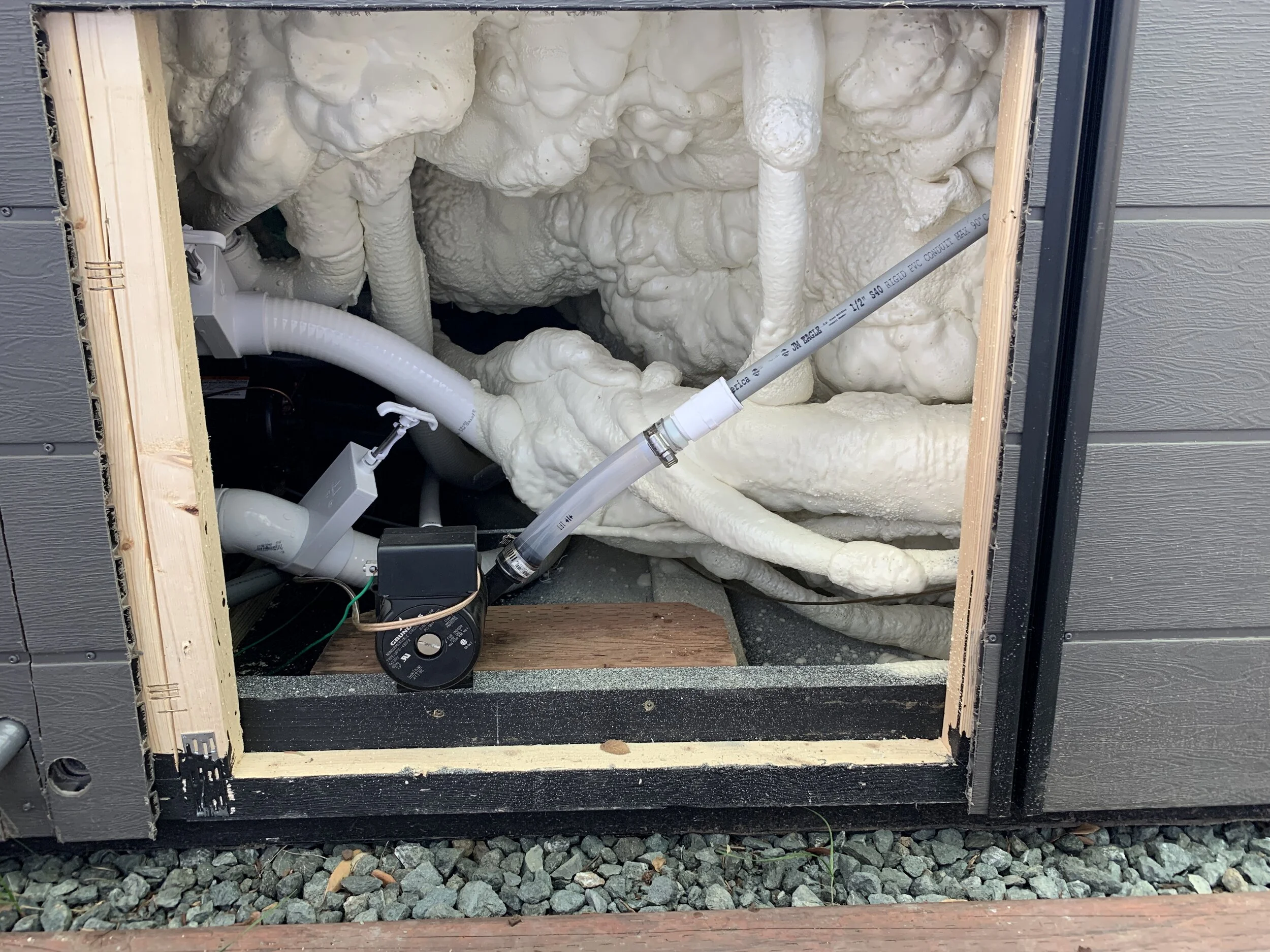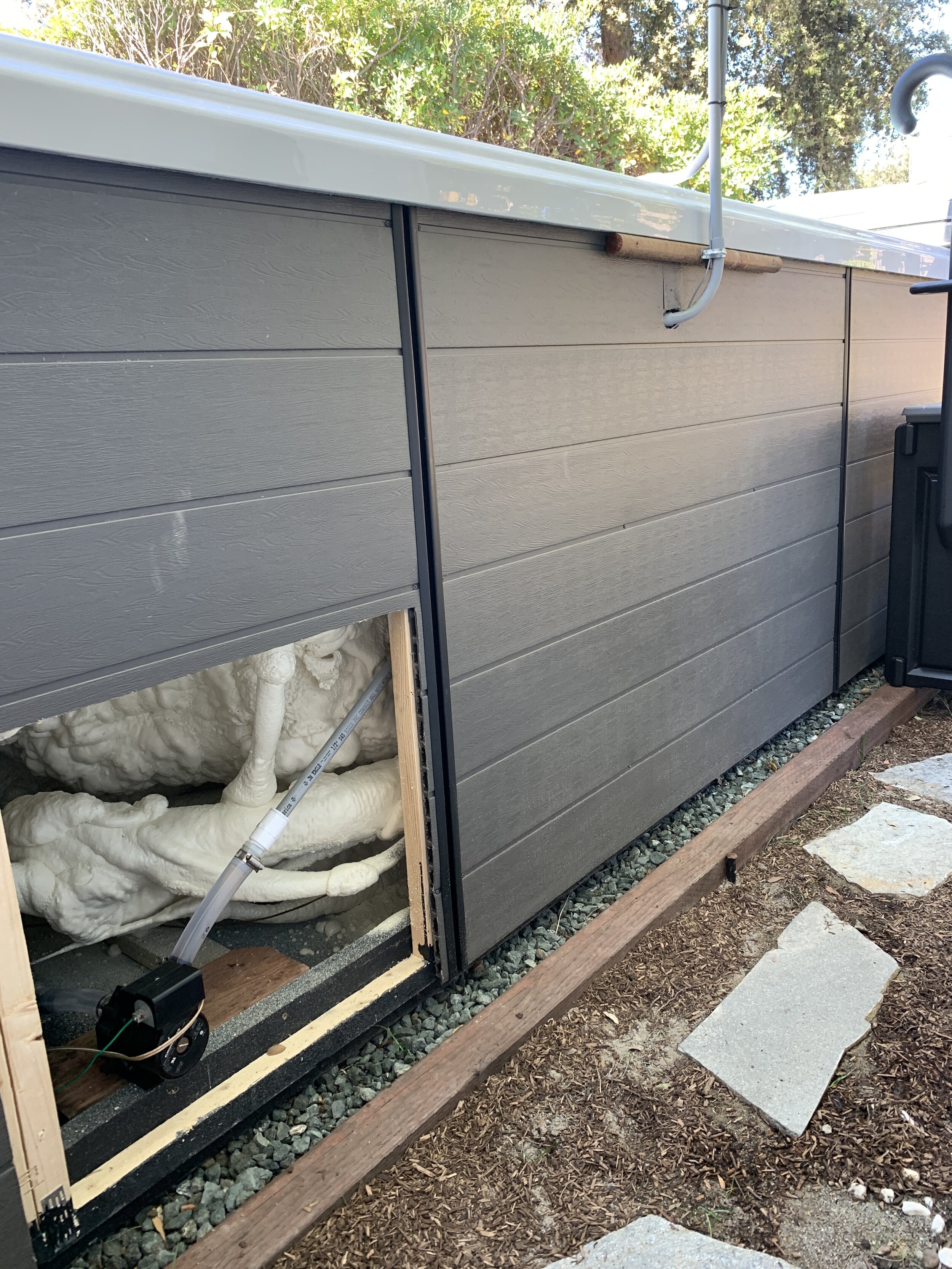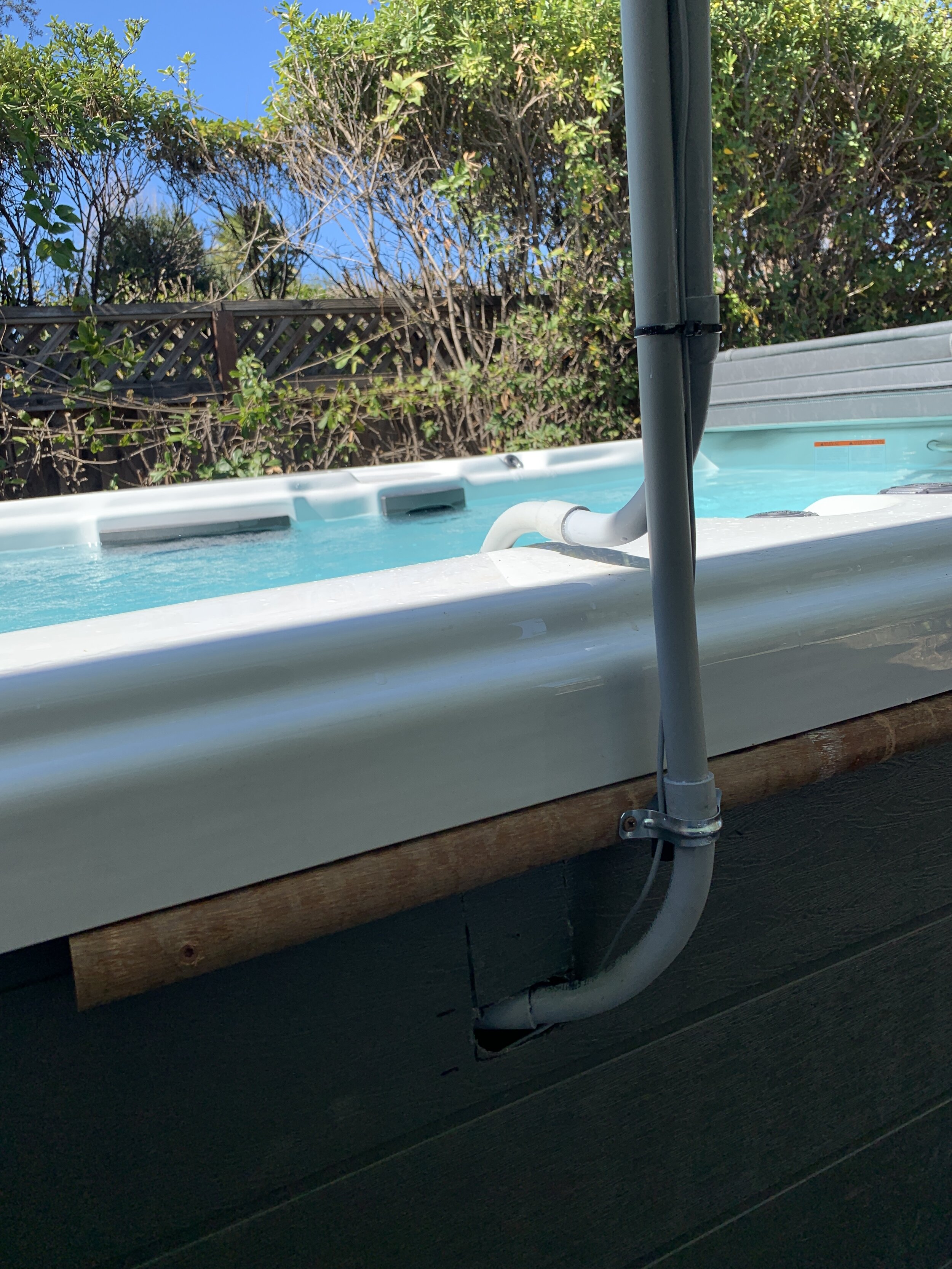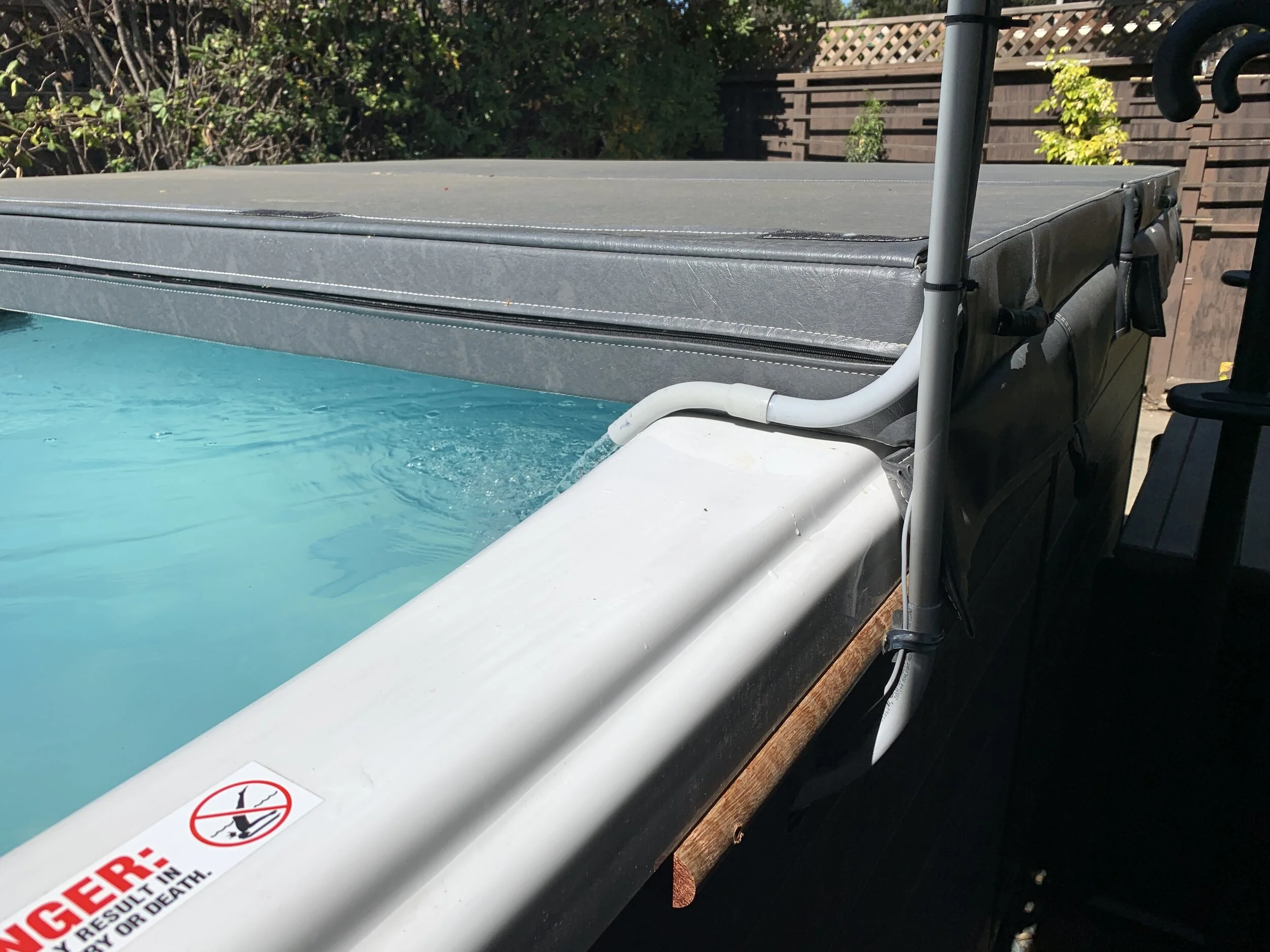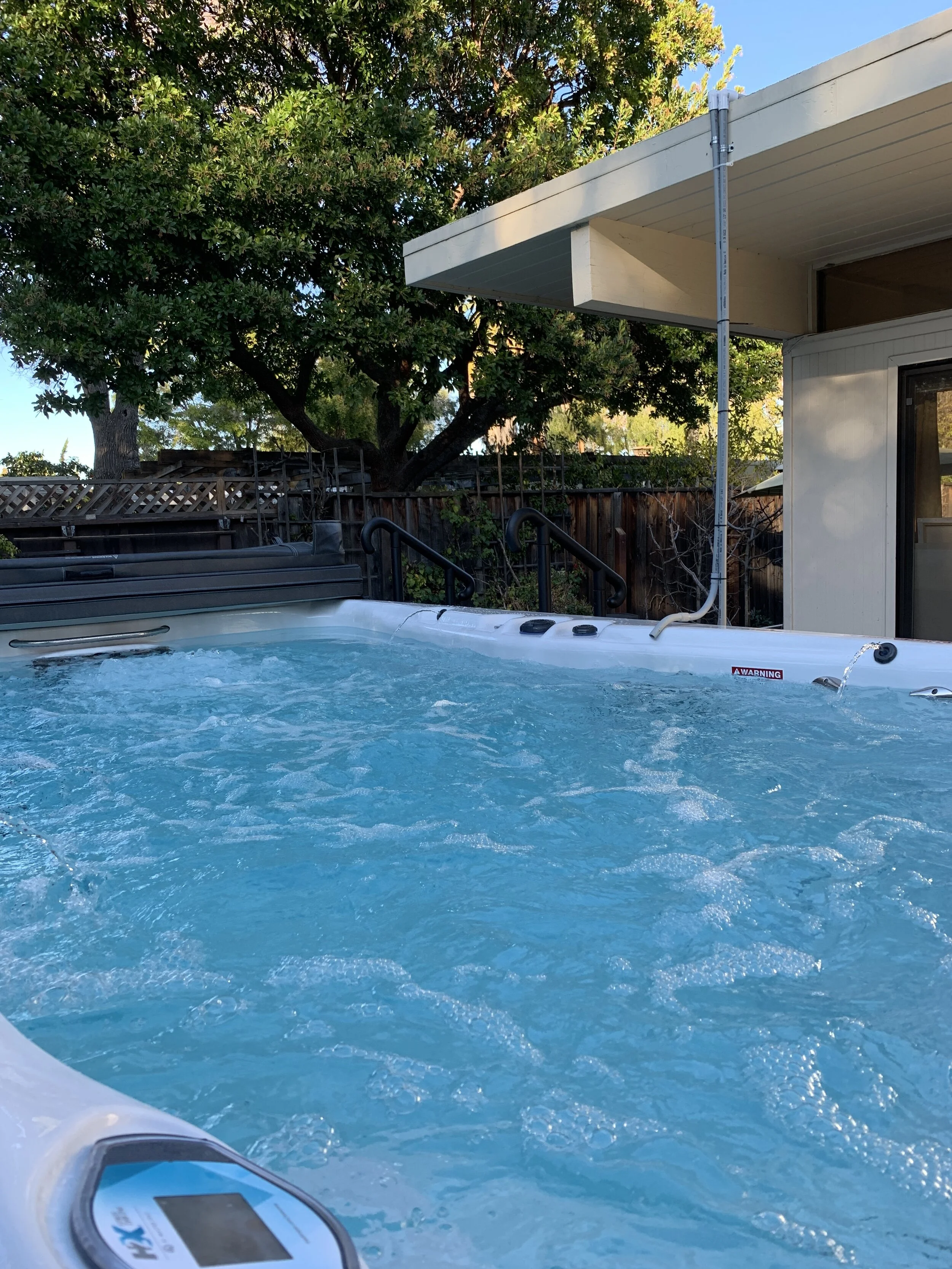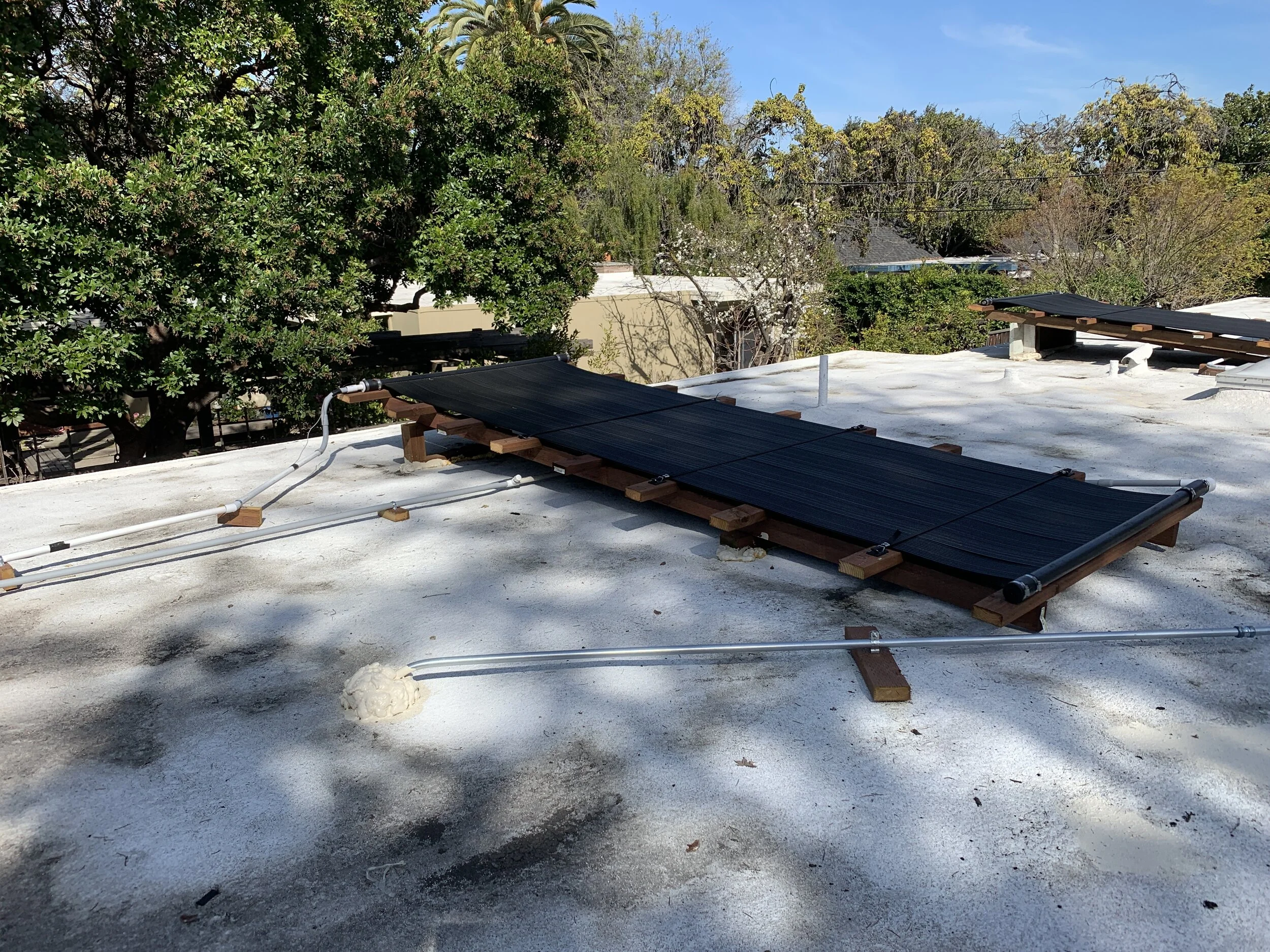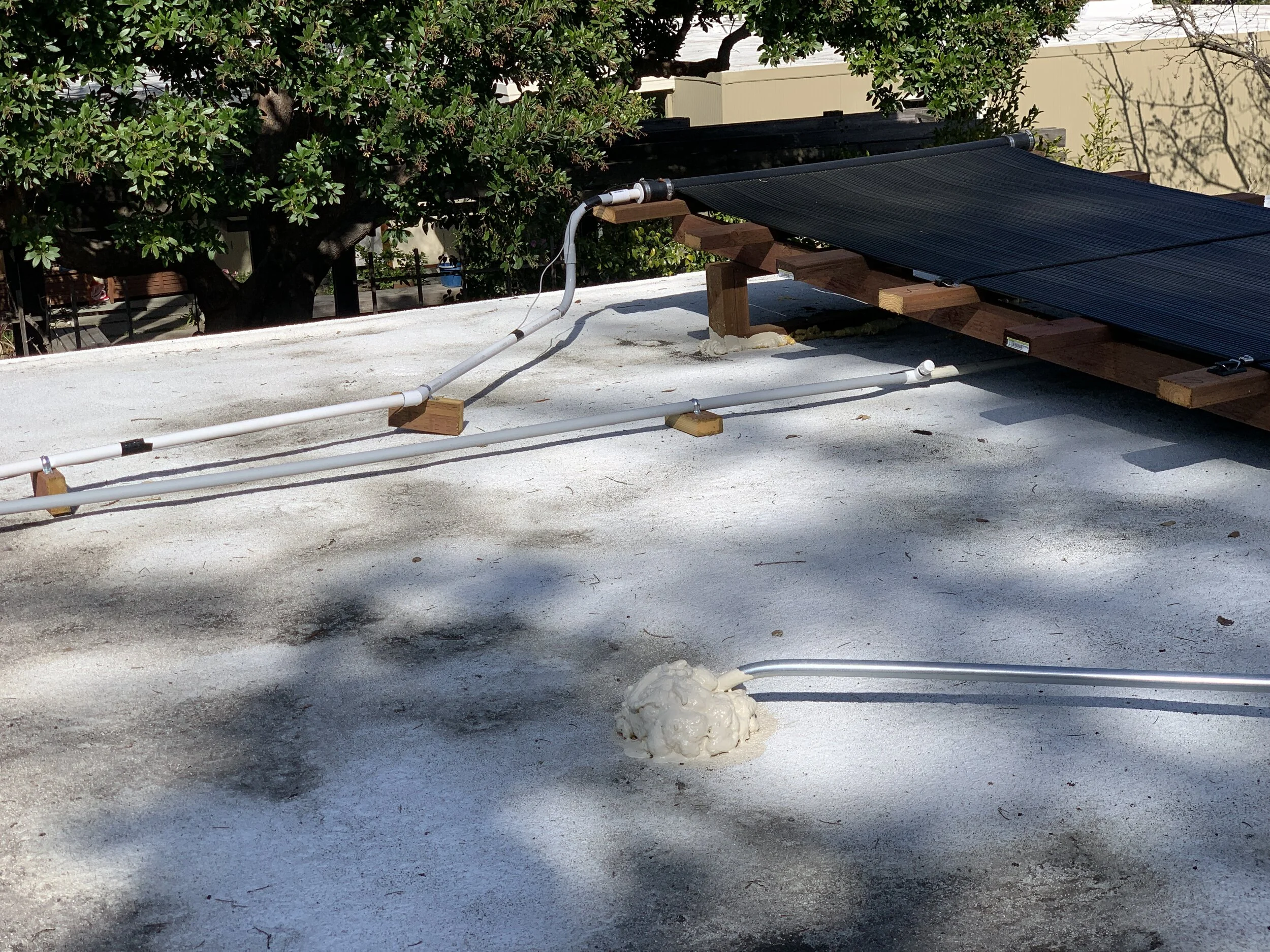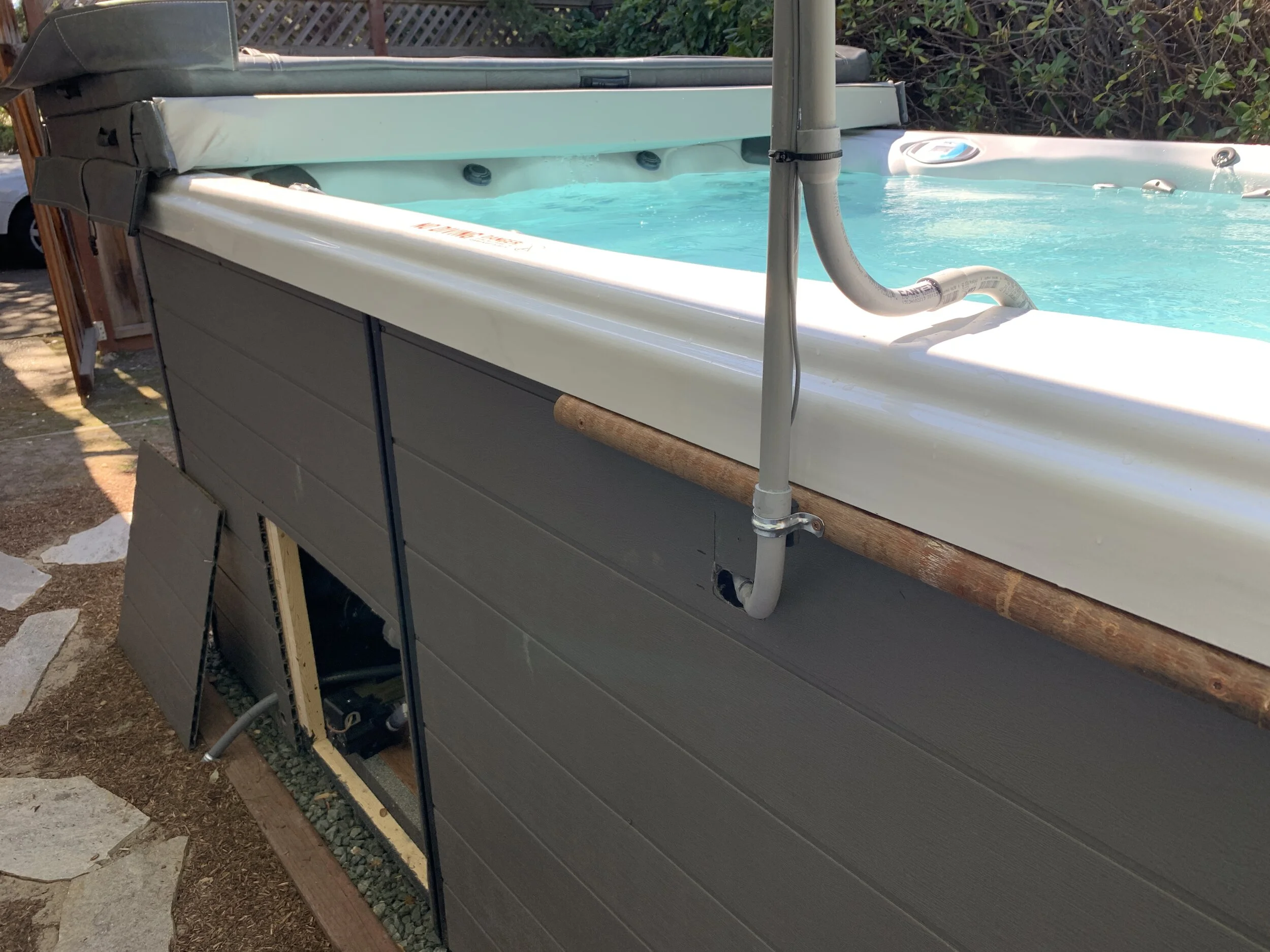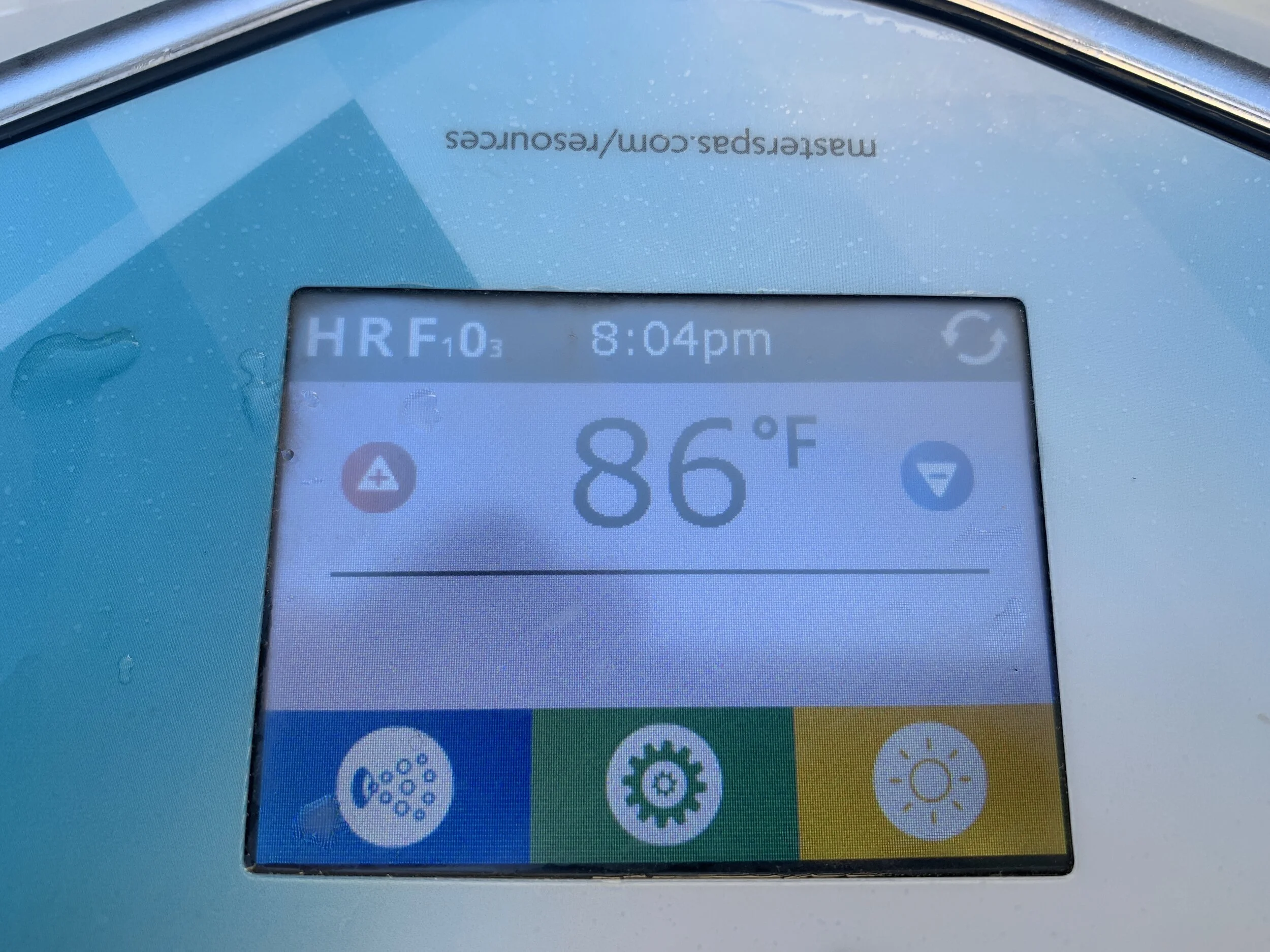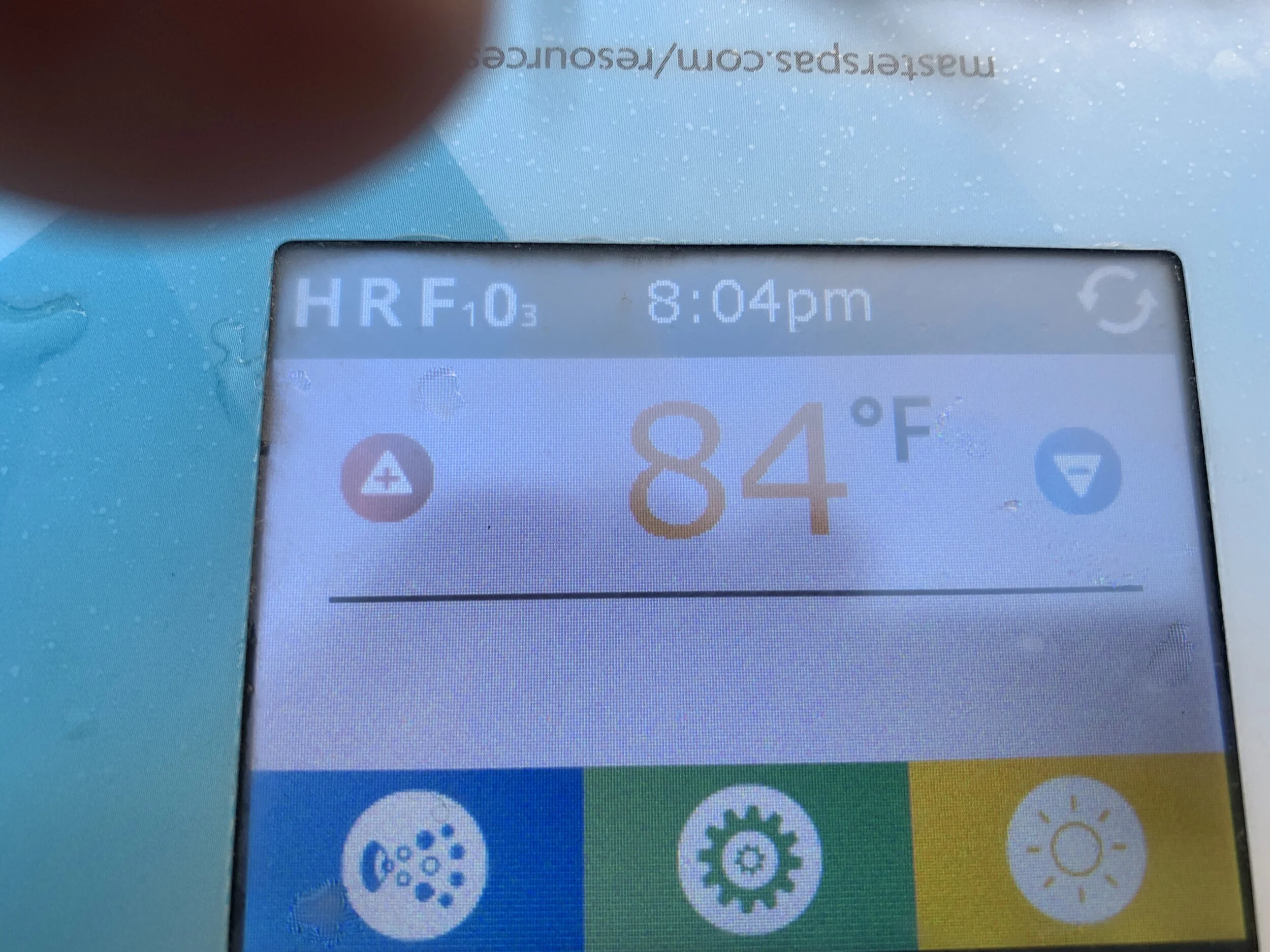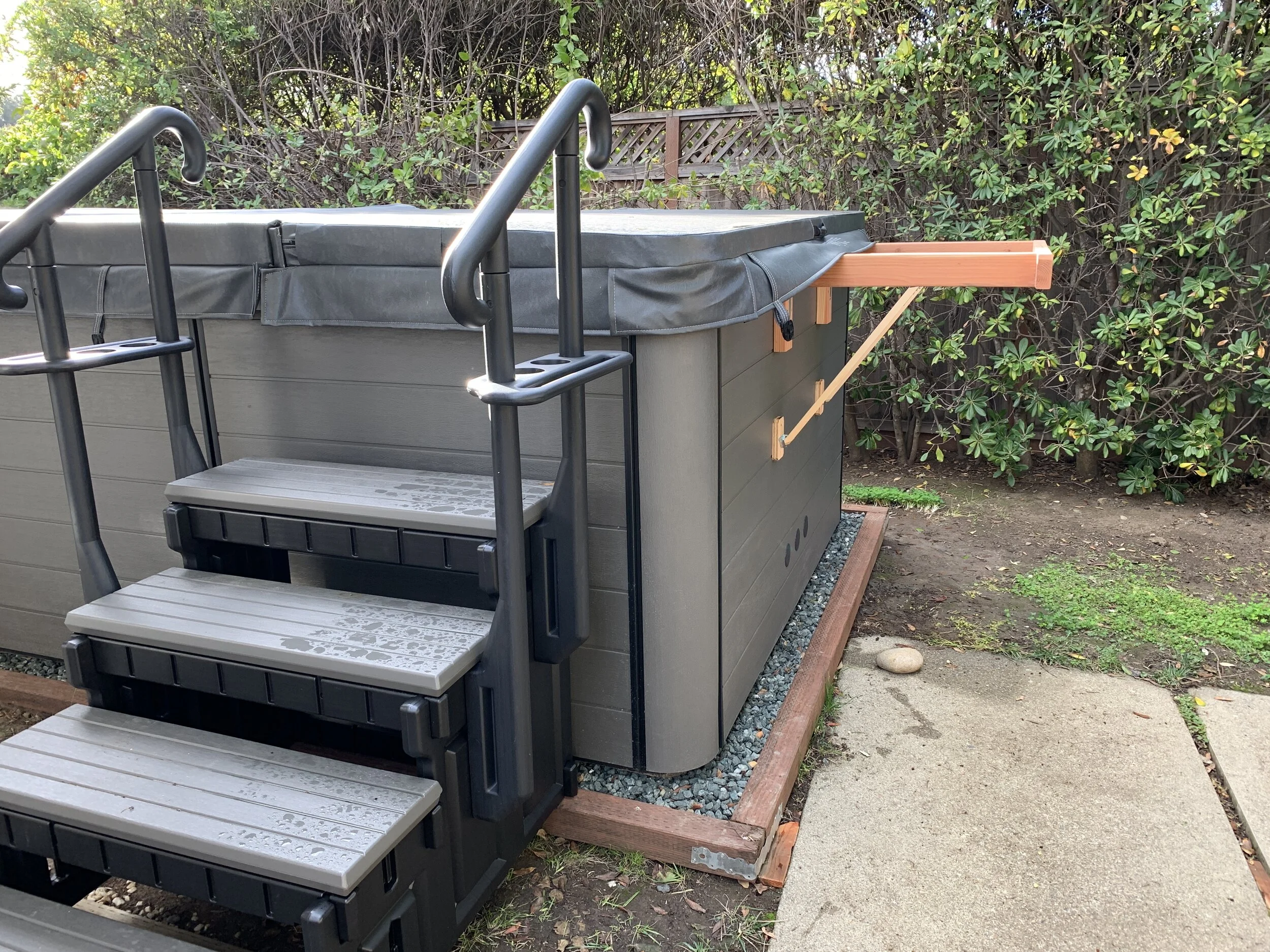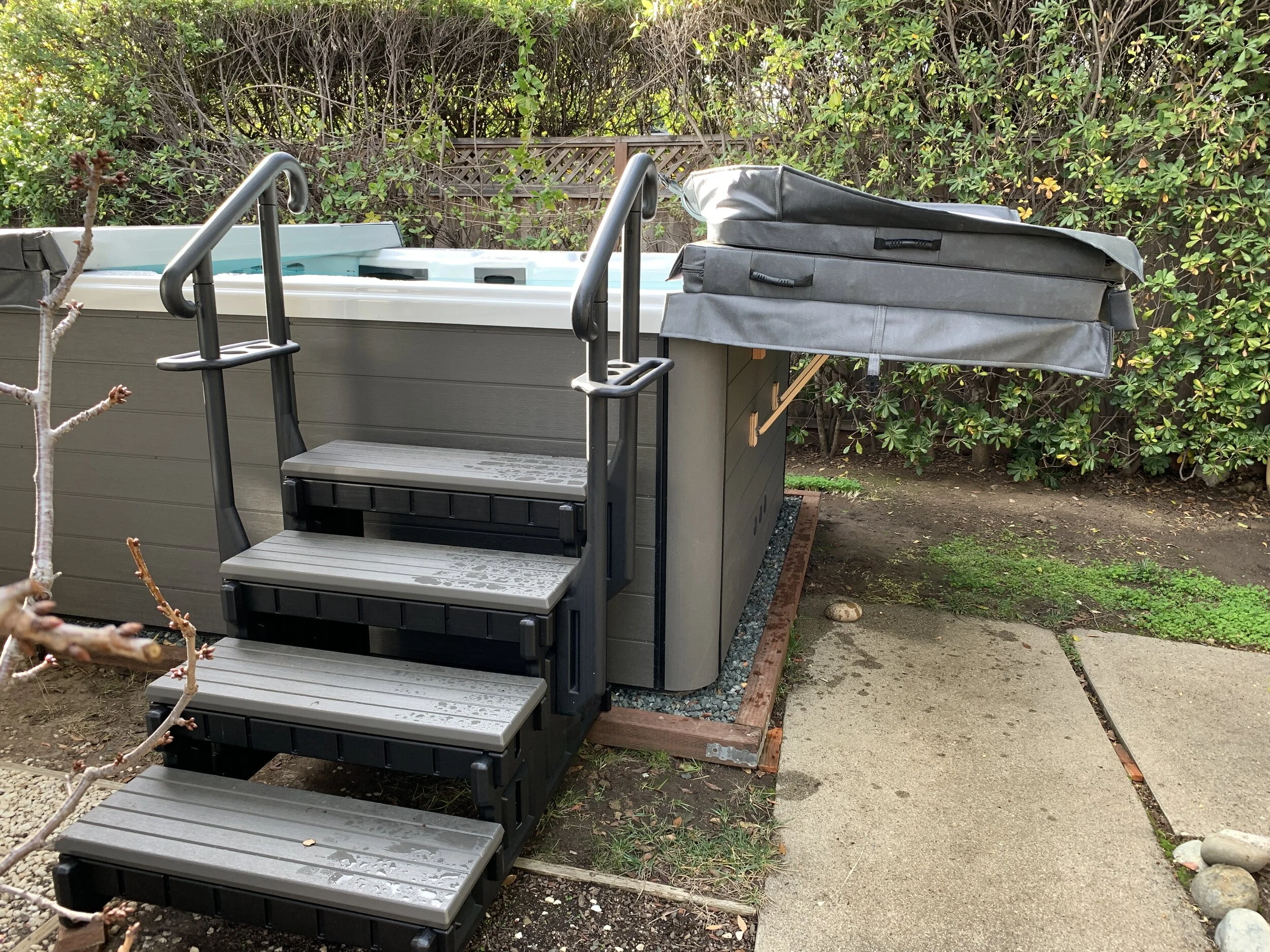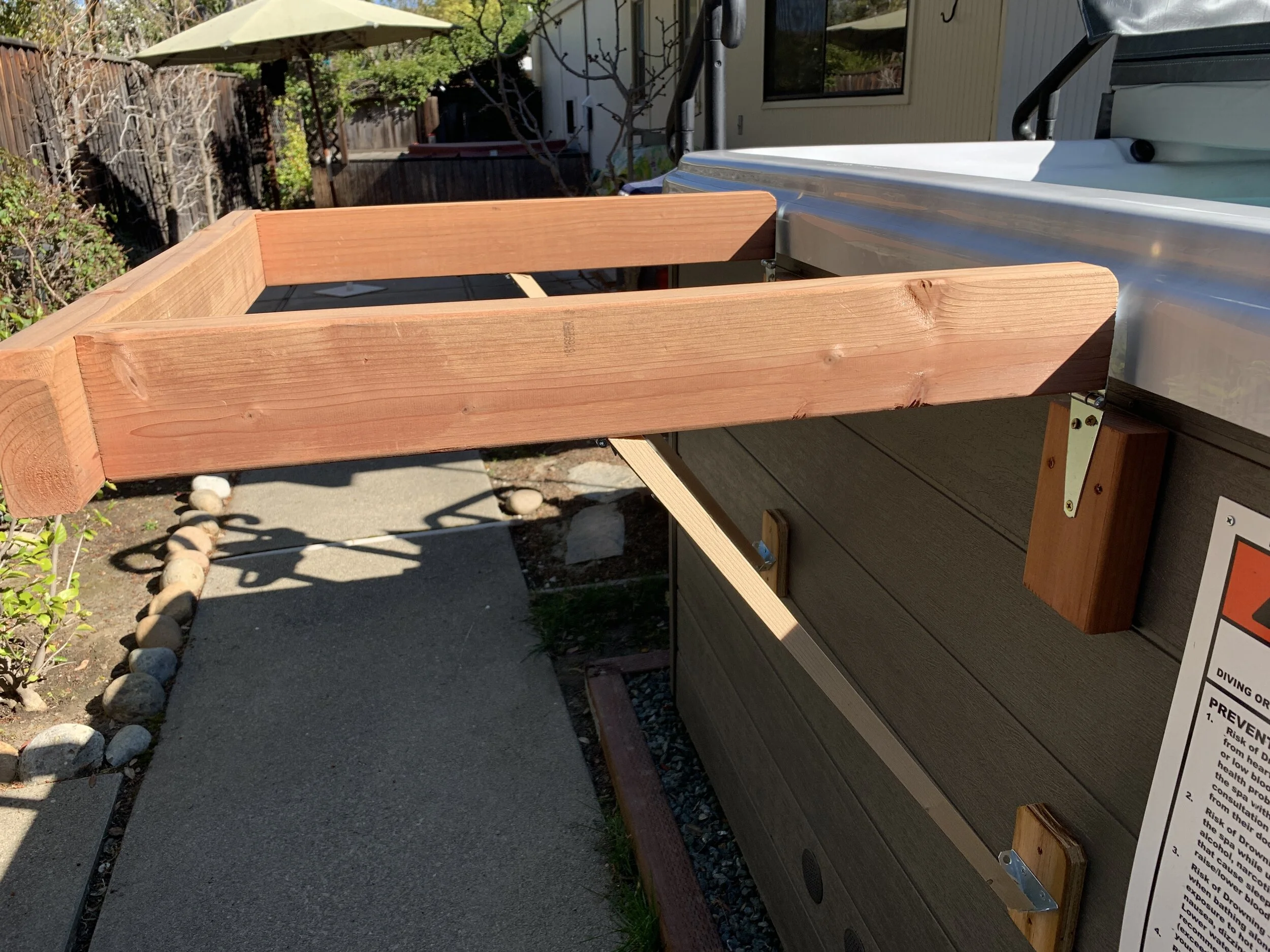Maintenance: 1178M
This document also describes procedure for maintenance of the 1178M swim spa.
Do not hesitate to call Klaus (+1-408-731-0794 or e-mail klaush@mcn.org if there is any question or problem. The sooner the better.
Many pool-related problems can be resolved easily when taken care of immediately, but they may create serious situations when left unattended for as little as a day !!!.
Solar Heating of Swim Spa
Essentially entirely eliminates use of electric heater
For hot tubs and swim spas, the vast majority of electric power consumption is for water heating to keep the spa at the desired temperature. The heat loss is minimized by good physical design of the spa, i.e., thick foam insulation on the body and a thick cover (4-6” of polyurethane foam) on top, designed with tight fit to minimize evaporative heat loss. Nonetheless, the residual heat loss on an average day keeps the 5kW heater running for at minimum 2 hrs per day in our climate (SF Bay Area), which amounts to a whopping 300 kWh avg per month. A good solar heater can cut this to close to zero.
We designed and implemented a solar heater using one 4’ x 12’ unglazed polypropylene solar thermal collector (good model, from Amazon.com: SunQuest Solar Pool Heater Panels - 2 (2ft x 10ft) Collectors w/Roof/Rack & Diverter Kit -Solar Water Heater) installed on the flat roof of our one-story house. (For drainage, one wants a slope of about 1/12 minimum). Water is pumped with a 1/15 HP pump (SpaDepot.com: Grundfos Circulation Pump 1" Barb 120V 31842) into the solar collector on the roof (back flow “pulls” water up, hence the pump only has to overcome minor friction losses and operates using insignificant power — just a few tens of Watts, perhaps 3 kWh per month on average). Given that desired spa temperature for workouts is about 85 degrees, we set it to 84 degrees and let the solar heater supplement. On consecutive sunny days, even in February, the resulting water temperature ranges between 86-87 degrees in the evening and down to 85- 86 degrees in the mornings, i.e., the built-in 5kW heater will not comes on at all, except for short times on rainy days. Excessive solar heating during summer months can be prevented by adjusting the turn-on/turn-off temperature differential on the solar controller, and by leaving the spa covers open. The solar collector system automatically drains when the Grundfos pump stops as controlled by the solar controller, thus providing effective freezing protection during cold winter nights.
With this solar heater, our swim spa uses only very minor amounts of electric power to operate — only a few kWh per month for filtration pumping and jets when actually swimming, and essentially none for heating — perhaps 10-20 kwh per month total on average, or 95% electric power savings over standard operation without solar thermal energy assist. Total cost was about $700 plus one day of a skilled contractor helping with the installation. This cost is recovered in about 18 months of service. But, more importantly, the entire installation meets energy savings goals even for extreme environmentalists.
Opening Spa for Swimming
Collapsible custom racks hold opened covers in place
Each cover side rests, folded, on a custom rack which is designed to easily collapse onto the sides of the spa when cover is closed.


